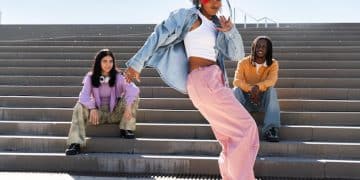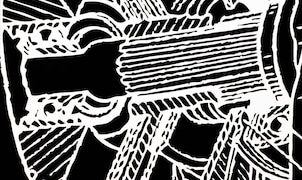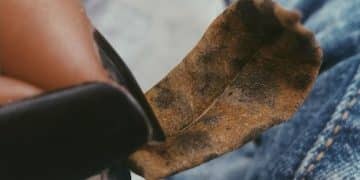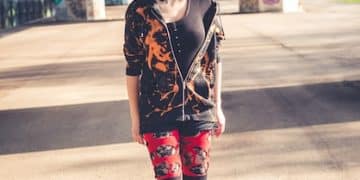Master DIY Underground Fashion in 3 Months: A Step-by-Step Guide
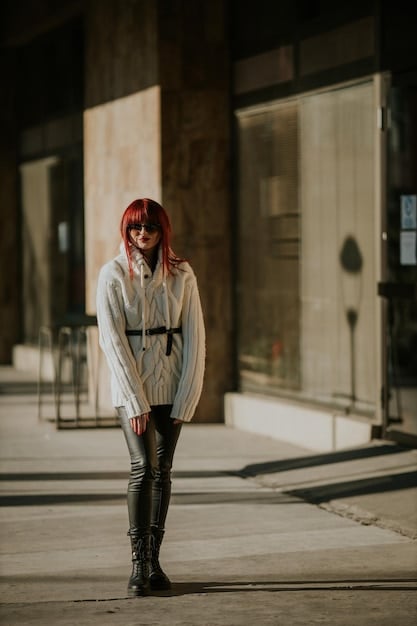
Mastering DIY underground fashion in three months involves understanding its origins, planning your unique style, acquiring essential skills like repurposing and customization, and building a standout wardrobe with practical, budget-friendly projects.
Want to dive into the world of underground fashion but don’t know where to start? This 3 Months to Mastering DIY Underground Fashion: A Step-by-Step Guide will take you from novice to trendsetter, crafting unique looks that express your individuality.
Understanding Underground Fashion
Underground fashion isn’t just about clothes; it’s a statement. It’s about rejecting mainstream trends and embracing individuality through unique, often DIY, styles. Understanding its roots will help you tap into its creative potential.
The Origins of Underground Fashion
Underground fashion emerged from various subcultures, each with its own distinctive look. Punk, goth, and grunge have all contributed to the DIY aesthetic that defines the scene.
- Punk: Characterized by ripped clothing, safety pins, and anti-establishment messages.
- Goth: Known for dark, romantic styles, often incorporating Victorian elements.
- Grunge: Defined by oversized flannels, ripped jeans, and a rejection of consumerism.
These subcultures emphasized self-expression over conformity, fostering a culture of creativity and resourcefulness.
Key Elements of Underground Fashion
Several key elements define underground fashion. These include DIY customization, repurposing materials, and embracing unconventional styles.
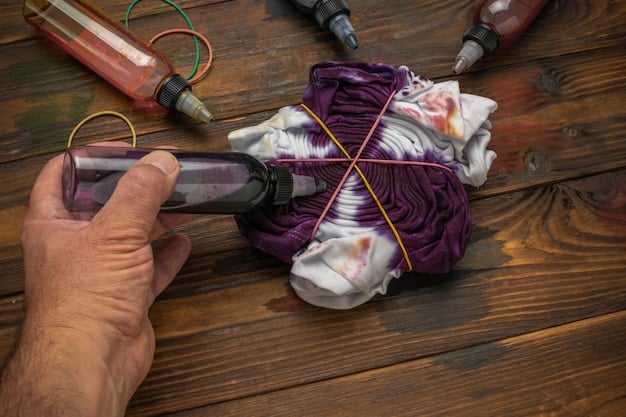
- DIY Customization: Adding personal touches to clothing, such as patches, paint, or embroidery.
- Repurposing Materials: Transforming old or discarded items into new, fashionable pieces.
- Unconventional Styles: Mixing and matching different genres to create unique and expressive looks.
By understanding these elements, you can start to develop your own unique underground style.
In summary, underground fashion is rooted in subcultures that value individuality and creativity. Its key elements include DIY customization, repurposing materials, and embracing unconventional styles, all of which contribute to its distinctive and expressive nature.
Planning Your Underground Style
Before diving into DIY projects, it’s essential to define your personal underground style. This involves identifying your inspirations and creating a mood board to guide your creations.
Finding Your Inspirations
Look to various sources for inspiration, including music, art, and other subcultures. Consider what resonates with you and how you can incorporate it into your style.
Attend local shows and events to observe different underground fashion trends. Online platforms like Pinterest and Instagram can also provide a wealth of visual inspiration. Don’t be afraid to draw inspiration from unconventional sources.
Creating a Mood Board
A mood board is a visual representation of your style. It should include images, colors, and textures that inspire you. Creating a mood board will help you stay focused and consistent in your DIY projects.
- Gather Visuals: Collect images from magazines, websites, and social media that reflect your aesthetic.
- Choose Colors and Textures: Select a color palette and identify textures that you want to incorporate into your designs.
- Identify Key Themes: Look for recurring themes or motifs in your visuals to help define your style.
Your mood board should be a living document that evolves as your style develops. Use it as a reference point throughout your DIY journey.
In essence, planning your underground style involves finding inspiration from various sources and creating a mood board to guide your DIY projects. This process will help you develop a unique and cohesive aesthetic.
Essential DIY Skills for Underground Fashion
Developing essential DIY skills is crucial for mastering underground fashion. These skills include basic sewing, repurposing techniques, and customization methods.
Basic Sewing Techniques
Knowing how to sew is fundamental for DIY fashion. Start with basic stitches and gradually learn more advanced techniques.
Hand-sewing is a great way to begin, as it requires minimal equipment. Practice sewing straight lines, attaching buttons, and hemming fabric. Invest in a sewing machine to speed up your projects and tackle more complex designs.
Repurposing Techniques
Repurposing is the art of transforming old or unwanted items into new, fashionable pieces. This skill is essential for creating unique and sustainable underground fashion.
- Deconstruction: Taking apart old garments to use the fabric or components in new designs.
- Upcycling: Transforming discarded materials into higher-value products.
- Altering: Modifying existing clothing to create a better fit or a new look.
Experiment with different repurposing techniques to discover what works best for your style.
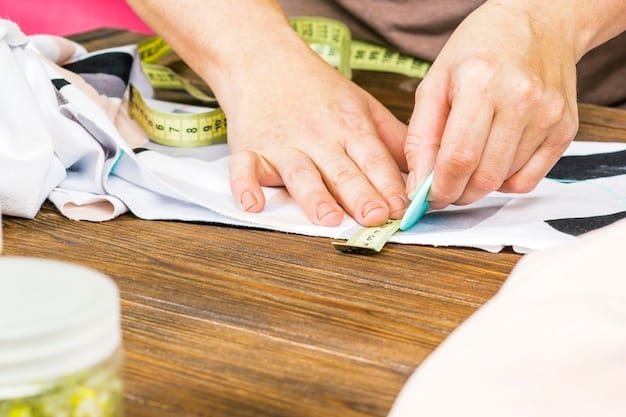
Customization Methods
Customization is all about adding personal touches to your clothing. This can involve painting, dyeing, screen-printing, or adding embellishments.
Fabric paint is a great way to create unique designs on your clothing. Experiment with different techniques, such as stenciling or freehand painting. Tie-dye is another popular customization method that can add a vibrant and unique touch to your garments.
In summary, mastering essential DIY skills such as basic sewing, repurposing techniques, and customization methods is crucial for creating unique and expressive underground fashion. These skills will empower you to bring your creative visions to life.
Month 1: Building Your Foundation
The first month is about building your foundation. This involves gathering essential supplies, practicing basic techniques, and creating simple DIY projects.
Gathering Essential Supplies
Start by gathering the essential supplies for your DIY projects. This includes fabric scraps, sewing tools, and customization materials.
- Fabric Scraps: Collect old clothing, thrift store finds, and fabric remnants.
- Sewing Tools: Invest in a basic sewing kit with needles, thread, scissors, and measuring tape.
- Customization Materials: Gather fabric paint, dyes, stencils, and embellishments.
Having the right supplies will make your DIY projects much easier and more enjoyable.
Practicing Basic Techniques
Dedicate time to practicing basic sewing and customization techniques. This will help you build confidence and improve your skills.
Start with simple stitches, such as running stitch and backstitch. Practice on fabric scraps before working on actual garments. Experiment with different customization methods, such as fabric painting and tie-dye, to see what you enjoy most.
Simple DIY Projects
Begin with simple DIY projects to build your skills and confidence. These projects should be easy to complete and provide a sense of accomplishment.
Create a simple patch by cutting out a shape from fabric and sewing it onto a jacket or bag. Alter an old t-shirt by cropping it or adding decorative elements. These small projects will help you develop your skills and inspire you to tackle more ambitious designs.
To summarize, the first month should focus on gathering essential supplies, practicing basic techniques, and completing simple DIY projects. This foundation will set you up for success in the following months.
Month 2: Expanding Your Skills
In the second month, focus on expanding your skills and tackling more complex projects. This involves learning advanced techniques, experimenting with different styles, and creating more ambitious designs.
Learning Advanced Techniques
Take your sewing and customization skills to the next level by learning advanced techniques. This includes pattern making, garment construction, and more intricate embellishment methods.
Learn how to create basic patterns for simple garments, such as skirts and tops. Practice constructing these garments using fabric scraps. Explore advanced embellishment techniques, such as embroidery and beading, to add unique details to your designs.
Experimenting with Different Styles
Use this month to experiment with different underground fashion styles. Try incorporating elements from various subcultures into your designs.
Create a punk-inspired outfit by ripping and patching an old denim jacket. Design a goth-inspired dress using dark fabrics and lace. These experiments will help you discover your personal style and push your creative boundaries.
More Ambitious DIY Projects
Tackle more ambitious DIY projects to showcase your expanding skills. These projects should be challenging but achievable.
Design and construct a custom skirt or pair of pants using your new pattern-making skills. Create a statement jacket by combining different fabrics and embellishments. Document your progress and share your creations on social media to inspire others.
In summary, the second month should focus on learning advanced techniques, experimenting with different styles, and tackling more ambitious DIY projects. This will help you refine your skills and develop your unique underground fashion aesthetic.
Month 3: Creating Your Standout Wardrobe
The final month is all about creating your standout wardrobe. This involves planning your outfits, focusing on quality and durability, and showcasing your style with confidence.
Planning Your Outfits
Plan a cohesive set of outfits that reflect your personal underground style. Consider how different pieces can be mixed and matched to create a variety of looks.
Create a capsule wardrobe of essential pieces that can be styled in multiple ways. Plan outfits for different occasions, such as concerts, art shows, and everyday wear. Experiment with layering and accessorizing to add depth and interest to your looks.
Focusing on Quality and Durability
Invest time in creating high-quality, durable garments that will last. This involves using quality materials and paying attention to construction details.
Choose durable fabrics that can withstand wear and tear. Reinforce seams and stress points to prevent tearing. Use quality thread and buttons to ensure your garments hold up over time.
Showcasing Your Style
Wear your DIY underground fashion with confidence. Showcase your unique style to the world.
Attend local events and show off your creations. Participate in fashion shows or photo shoots to gain exposure. Share your outfits on social media and inspire others to embrace DIY fashion.
In conclusion, the final month should focus on planning your outfits, focusing on quality and durability, and showcasing your style with confidence. This will help you create a standout wardrobe that reflects your unique underground fashion aesthetic.
| Key Point | Brief Description |
|---|---|
| 🛠️ DIY Skills | Master sewing, repurposing & customization. |
| 🎨 Style Planning | Find inspiration & create mood board. |
| 👚 Month 3 Goal | Create a standout, mixable wardrobe. |
| ♻️ Repurposing | Transform old items into new fashion. |
FAQ
▼
Underground fashion is a style movement rejecting mainstream trends. It emphasizes individuality and self-expression, often through DIY methods, repurposed materials, and unique customization.
▼
Explore different subcultures like punk, goth, or grunge for inspiration. Create a mood board with images and colors that resonate with you. Experiment with various styles to discover what suits you best.
▼
Start with basic sewing techniques, such as hemming and attaching buttons. Learn repurposing methods to transform old clothes. Master customization by painting, dyeing, and adding embellishments to create unique designs.
▼
Choose quality fabrics that withstand wear and tear. Reinforce seams and stress points to prevent ripping. Secure buttons and zippers tightly. Proper care and maintenance will also extend the life of your creations.
▼
Attend local artistic events and shows. Participate in fashion shows or photo shoots. Share your looks on social media. Engage with the underground fashion community to spread awareness of alternative self-expression.
Conclusion
By following this 3-month guide, you’ll be well on your way to mastering DIY underground fashion. Remember, the key is to embrace your creativity, experiment with different styles, and express your unique personality through your clothing.
